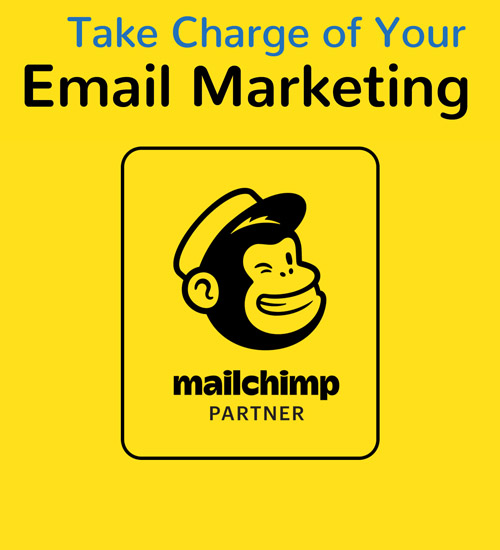With so much competition online, how can you make sure your e-commerce business stands out? That’s where e-commerce SEO (search engine optimization) comes in. It boosts your business’s discoverability, engagement, and persuasive power online.
We’ll establish the foundation for getting your e-commerce site to the top of search engine results pages (SERPs). We’ll cover common mistakes to avoid, tools to use, and effective practices to improve your online presence. Plus, we’ll give you actionable solutions to actively engage your audience and create meaningful interactions.
After reading this guide, you’ll have the knowledge and tools to transform your online business into a thriving and customer-centric venture. Let’s begin.
4 Ways To Analyze Online Store’s SEO For Better Search Ranking
Before optimizing your online store, you need to know where you stand. Performing self-assessment is your first step. It will help identify your site’s strengths and weaknesses and build a proactive optimization strategy. Here’s how you can start your self-assessment:
1. Google Your Online Store’s Name
Searching your business website’s name tells you how your website appears in search results. If your website ranks well, it means your SEO strategies are working.
When googling your website, you should type the website name exactly as it appears in the URL. This is important because you want to know who is specifically looking for your website or brand. It also helps you discover how your brand is perceived online through feedback, including insights from your Google My Business profile.
Let’s use the Suburban K9 Dog Training website as an example. Upon searching, you can immediately tell that your SEO efforts are strong when you get the following results:
- The website, “Suburban-k9.com,” appears as the first result in the search listings.
- The title and meta description accurately represent the website’s content. Suburban K9’s top page showcases its 1-hour in-home dog training. So, they highlight all their available bootcamp and private training services in the web page’s title and meta description.
- Spot positive customer reviews, ratings, and mentions from trusted online review platforms like Yelp.
- The website appears above the competitors’ sites.
Overall, Suburban K9’s website ranks well for its name. It’s a positive sign that the brand is doing well in brand recognition and customer satisfaction.
Conducting online research on your website also offers an opportunity to discover technical issues. Check all your web pages on the SERP list to know if there are:
- Broken links
- Slow-loading pages
- Missing meta descriptions
2. Test Your Online Store Loading Speed
Slow-loading websites aren’t anyone’s favorite, and that includes search engines. That’s one reason they consider loading speed when determining website rankings. Faster e-commerce websites often secure a higher rank, increasing visibility and organic traffic.
Ideally, a web page should have a load speed of under 2 seconds for desktops and 1 second for mobile devices. However, most website speed testing tools, like Pingdom, proved that the average website load time is 3.21 seconds. So, this becomes acceptable even though users may experience a slight delay occasionally.
Though they are recommended, the page loading times still vary on various factors. Here are some key factors search engines consider in measuring your webpage loading speed. We also include speed optimization strategies for each factor to address the potential causes of slow loading times.
- Code efficiency: Must have clean, efficient, and well-structured code
- Volume of content and images: Compress images and use the right image formats
- Security settings: Use efficient security plugins and perform regular audits of the website’s security configuration
- Caching mechanisms (both on the server and user’s browser): Set up browser caching so visitors don’t have to download all website assets every time they visit
Pingdom Website Speed Test evaluates your e-commerce store’s performance and loading speed. You can start the test after encoding the website’s URL and the location of your target customers. Let’s use Suburban K9’s in-home dog training webpage again as a test subject to show you how this tool works.
The current load speed is over 4 seconds, so the users have a higher chance of leaving the site. But there’s nothing to worry about because Pingdom also includes a list of recommendations and suggestions for optimizing the website’s speed. One of its key features is a waterfall chart. It’s a graphical representation that shows your store’s webpage loading process, from its initial start to the final completion.
3. Check Your Online Store’s Mobile-Friendliness
Optimizing your online store for mobile is no longer an option; it’s a necessity. As mobile technology grows, more consumers prefer using smartphones for online shopping. Plus, popular search engines like Google adopted a mobile-first indexing approach. This means it primarily uses the mobile version of a website for ranking and indexing.
How can you perform a mobile-friendliness check correctly? Google offers a practical tool called the Mobile-Friendly Test. Just input your website’s URL into the provided field and click Run Test; its system will analyze your e-commerce site. If there are issues, this tool will outline them for you and offer suggestions.
This tool is a Google Search Console feature. So, after running a test, you can easily access the Core Web Vitals report. This report can help you fix common SEO issues that negatively impact the user experience on your store.
However, if you want to visualize how your e-commerce site is displayed to your audience, use MobiReady. Running a test is similar to Google’s Mobile-Friendly Test; input your website’s URL and hit the Go button. Let’s take 3wishes as an example. They’ve recently updated their website to feature a stunning line of lace lingerie and fantasy costumes for their sale promo.
We use MobiReady to check if the mobile experience of this apparel shop is as enchanting as on the desktop.
This tool evaluates a website’s performance based on page load time, responsive design, and visual appearance, to name a few. After the test is complete, it will generate a report that summarizes the findings.
The first half of the report displays the site’s page design in 4 different screen sizes. You can immediately see that all the elements of the apparel shop look and work the same. They load fast and don’t decrease the media file’s quality. While the other half breaks down various aspects of the website’s mobile-friendliness that need improvement.
4. Perform SEO Audit
E-commerce SEO is a multifaceted strategy. It covers various website elements that work together to shape your website’s online performance. An SEO audit will be the one to make sure that all these elements are in top form.
Before you begin your audit, you should have clear goals and objectives. It will help you focus your efforts. Ask yourself what you want to achieve when auditing your site. Are you primarily looking to improve on-page SEO, backlinks, or URLs with search demand?
If you have no idea where to begin, you can always address the technical SEO aspects first. It will ensure that your website’s code is clean and works well. It also covers checking for broken links, crawl errors, XML sitemap issues, and robots.txt file correctness.
Like most tasks, you can perform an SEO audit manually or use specialized tools. Both methods are effective, but the former requires more time, patience, and attention to detail. If you prefer the latter option, here are SEO audit tools you can consider, highlighting their most helpful features:
- Google Analytics SEO Reports: Organic search, insight search bar, popular keywords by session, and advanced segments
- Ahrefs: Site, keywords, and content explorer; schema markup validator, keyword difficulty checker, domain rating score, and rank tracker
- Google Search Console: Search Analytics tool, index coverage review, mobile usability report, and email alerts (when Google identifies site issues)
- Screaming Frog SEO Spider: Flexible site crawler to find broken links, duplicate content issues, visualize site architecture, and other technical SEO issues
- Moz Pro: Link explorer (page authority, domain authority from links, and spam score), keyword explorer, keyword difficulty tool, and free SEO toolbar (identify canonicalization issues and more)
An SEO audit typically begins with a crawl of a website. When should you perform a crawl? The timing depends on the website’s type and size. Do it often, especially if you make daily updates to your website or notice fluctuations in keyword rankings. This means online stores need frequent audits because they get updated regularly.
We’ll explore Screaming Frog SEO Spider (free version) to give you an idea of how SEO audit works. In this illustration, we’ll use Trace, a self-service analytical platform, as the example website. Trace is an e-commerce website with an active blog. So, regular SEO audits are essential to ensure that Trace’s online presence remains strong and competitive.
The crawler will scan, read, and understand your e-commerce website’s structure. This includes the content and topic that each web page includes. Once the crawl is complete, the tool will generate a detailed report.
For this example, we focus on auditing Trace’s URL details. The left column will showcase all the site’s internal links, and all its issues are on the right column. Click on any listed complex/common issue to show its details and how to fix it. If you want to investigate its internal linking’s health further, click the tabs for ‘outlinks’ and ‘inlinks.’
3 Best SEO Practices For A Highly-Optimized Online Store
In this section, we’ll unveil the effective strategies and techniques of e-commerce SEO. These practices are your ticket to gaining more organic search traffic, boosting conversion rates, and enhancing your bottom line.
I. Effective Keyword Research
Effective keyword research is all about understanding your target audience’s language and thought process. Identify the words and phrases they use when searching for products like yours and align them with your content.
Let’s say you’re running a SaaS-based e-Commerce platform selling yard management systems. Your goal is to make your site the go-to destination for yard management solutions. So, make sure to prioritize user search intent when looking for potential keyword ideas.
Also, focus on long-tail keywords rather than broad terms (e.g. yard management). Long-tail keywords are more specific and have less competition, making it easier to rank higher. You can use keyword research tools like Similarweb to help you identify trending and relevant keywords.
We begin the search with a seed keyword, yard management system, to get product-focused keywords. The results initially show a list of keywords that are perfectly matched with the seed keyword. But you can always click the other tab to get a set of:
- Related keyword
- Trending keyword
- Question-formed search query
You can also use the filter feature to assess each keyword’s search volume, competition, and relevance. The keywords are designed to display high-volume keywords all the way down to those with the lowest search volume. Choose the ones that best describe your products or services and align them to your content.
For example, use “best yard management systems” as your primary keyword. Since this is a commercial intent keyword, you can be confident it brings in qualified traffic. You can use it to write a guide on selecting reliable yard management solutions. It narrows down customers’ options and helps them make well-informed decisions on what to purchase.
You can use Google keyword planner if your main focus is to search Google-related keyword data. This keyword planner under Google Ads is a versatile, free SEO tool that can refine your target keyword list through its:
- Keyword forecasts
- See monthly searches
- New keyword suggestions
Here are more handy methods to help uncover informational keywords:
- Social media platforms
- Customer surveys and feedback
- Product listing platforms (Etsy, Google Shopping, Walmart, etc.)
II. Optimizing On-Page Content
In the competitive world of online shopping, your website’s content becomes your voice. So, when you optimize them properly, you ensure that what you say resonates with your potential customers and grabs their attention. Here are various parts of your online store’s content (backend factors) that you should optimize for maximum impact.
A. Title Tags
You are naturally drawn to the title tags when you look at search results. It’s not only because they are displayed in larger and bolder font styles, but they clearly describe the page’s content. Your audience is more likely to click if it’s relevant and interesting.
As a general rule of thumb, you should add keywords relevant to the product. Let’s say you run an online retail shop specializing in costumes and have a product page for a witch costume set. You can use the keyword midnight coven witch costume for women. It’s a creative keyword to use, ensuring that consumers can immediately recognize the product over thousands of products in search results.
Since multiple websites offer similar products, add your brand name to the title tag. It will serve as your secondary keyword, which helps your customers distinguish your listings from your competitors. Deliver a positive search experience, and it will increase your web page’s click-through rate (CTR) and potentially boost your search engine rankings.
Ensure that you match the keywords used in the title tags with the attributes of individual products. This includes, but is not limited to, product page URLs, and internal and external links.
B. Meta Descriptions
The title tag and meta description form a dynamic duo. The title tag introduces your product upfront, giving shoppers on search engines a quick snapshot of what’s on offer. Meanwhile, meta description provides additional context and information.
When these elements align with user intent and deliver a clear, compelling message, more users will click on your link. Here’s how you can effectively optimize your meta descriptions:
- Use rich snippets (if applicable): Best for product page with product reviews, ratings from customers, or event details
- No keyword stuffing: It makes your content appear spammy, which results in a higher visitor bounce rate
- Include a Call-to-Action (CTA): Add phrases like ‘Learn More,’ ‘Shop Now,’ or ‘Get Started’ to prompt action and engagement with your anchor keywords
- Create a sense of urgency or curiosity: A time-sensitive or intriguing offer is a powerful way to motivate consumers to click through your product page
C. Product Descriptions
As the name implies, product descriptions provide comprehensive information about the product. It typically describes the product’s technical information (product attributes), such as product specifications, sizes, and materials. Include its unique selling points (USPs) and how it addresses the customer’s needs or problems.
Remember to highlight the value customers are getting clearly. This includes the product’s price, any discounts, and special offers. If available, display user reviews and ratings on the product page. Positive reviews can reinforce trust and influence purchasing decisions.
Patch is one brand with excellent product descriptions. They include every detail consumers need – proper care, quick facts, and plenty of high-quality product images. They also add a unique product category (care level > easy to care for), making it easier to find.
III. Create Valuable, Original Content
Search engines love fresh, relevant, and helpful content. So, consistently publishing online content for search engines that aligns with your products and industry can improve your store’s rankings. This content isn’t just about selling. It’s more on educating and solving your customers’ problems.
When you offer informative, high-quality content, consumers will see you as an expert in your field and become a go-to resource. This will make it easier to establish trust and strengthen customer relationships. Creating original content can be challenging. Here are a few content ideas to help you get started:
i. How-To Guides
How-to guides are a valuable resource for customers. It helps them to assemble, set up, or use a product. They simplify each task to make the user experience smoother.
Some businesses create how-to guides as downloadable content. This approach makes it shareable through email, social media, and online file-sharing platforms like Google Drive and Dropbox. If you have a blog or content management system, you can publish the guide as blog content.
Estuary sets a great example of using this content marketing strategy. One blog post they publish is a comprehensive guide about 2 straightforward ways to connect MySQL To BigQuery. It provides step-by-step instructions, thoroughly explains the main topic, and offers alternative methods. It simplifies things for readers, making it easy to understand and apply the process successfully.
ii. Q&A
Search engines aim to provide users with the most relevant results for their queries. Q&A content is your best option because those questions come directly from the customers. When customers find helpful answers quickly, they are more likely to stay on your website, explore your products, and make a purchase.
Most online stores build an entire section for Q&A content. Here, they will address common queries and concerns. But some stores publish it as a blog post. One great example is Catena, an offshore EA placement service. They build an FAQ section where customers can see everything they need to learn how their service works. They also include social proof to establish trust and credibility.
As for their blog articles, they give job seekers expert advice on how to land their dream job. One article they feature highlights 20 job interview questions that employers typically ask. They explain the purpose of each question and provide an insightful answer.
Not all customer questions revolve around specific products or services. Sometimes, people seek inspiration and guidance on broader topics. For instance, you’re running an e-commerce business that offers customer relationship management (CRM) software. While your primary focus is selling CRM solutions, you understand that your customers’ needs go beyond just software.
With a clientele of business owners and managers, they may be interested in topics like enhancing leadership skills. You may share blog posts that explore various aspects of genuine leadership, building trust in the workplace, and effective communication. Other Q&A topics for e-commerce stores that you may discuss are the following:
- Shipping and return policies
- Order processing and payment methods
- Company-related information (values, policies, etc.)
iii. Industry News
Industry news often includes relevant keywords (short and long tail) that potential customers may be searching for. Creating content around these keywords can help improve your website’s visibility in SERPs. Not to mention, it will further increase your status as an expert in the field, reinforcing trust and authority in your industry.
Take eWay-CRM, for example. When Microsoft announced its new advancements in Azure Quantum, it provided insightful discussion on its blog. A few topics they discussed include:
- Problem it solves
- Azure Quantum key advances
- New technology addition (advanced AI models and natural language interfaces)
They intentionally do so to ensure all their audience are up-to-date with the latest innovations. You can share your content on email campaigns and social media platforms to maximize your online store’s visibility.
When creating an email campaign, follow the industry’s email design best practices. It ensures your email campaigns are engaging, visually appealing, and effective. Also, add an easy-to-access unsubscribe link. This is not only a legal requirement but also respects recipients’ preferences.
Conclusion
Thousands of businesses are competing for the same audience online. E-commerce SEO is the critical solution, giving your business a competitive edge without resorting to complex practices. You just need to understand your target audience’s needs and meet the technical requirements of search engines.
For the latter, you can consider every search engine’s ranking factor and strategically incorporate them into your e-commerce SEO strategy plan. It covers everything from your site’s structure to its content and navigation.
Remember, SEO is an ongoing process. Regularly monitor and analyze your e-commerce platform (online search and SEO audit) and make necessary improvements. This data-driven approach helps you make informed decisions, refine strategies, and adapt to the fast-changing market conditions.
If you need assistance conquering the digital landscape, Deep Focus is here to help you succeed. Our end-to-end solutions, including top-tier SEO services, are designed to elevate your brand and drive success. Contact us now, and let’s discuss your idea.

Author Bio
Burkhard Berger is the founder of Novum™. He helps innovative B2B companies implement revenue-driven SEO strategies to scale their organic traffic to 1,000,000+ visitors per month. Curious about what your true traffic potential is?





